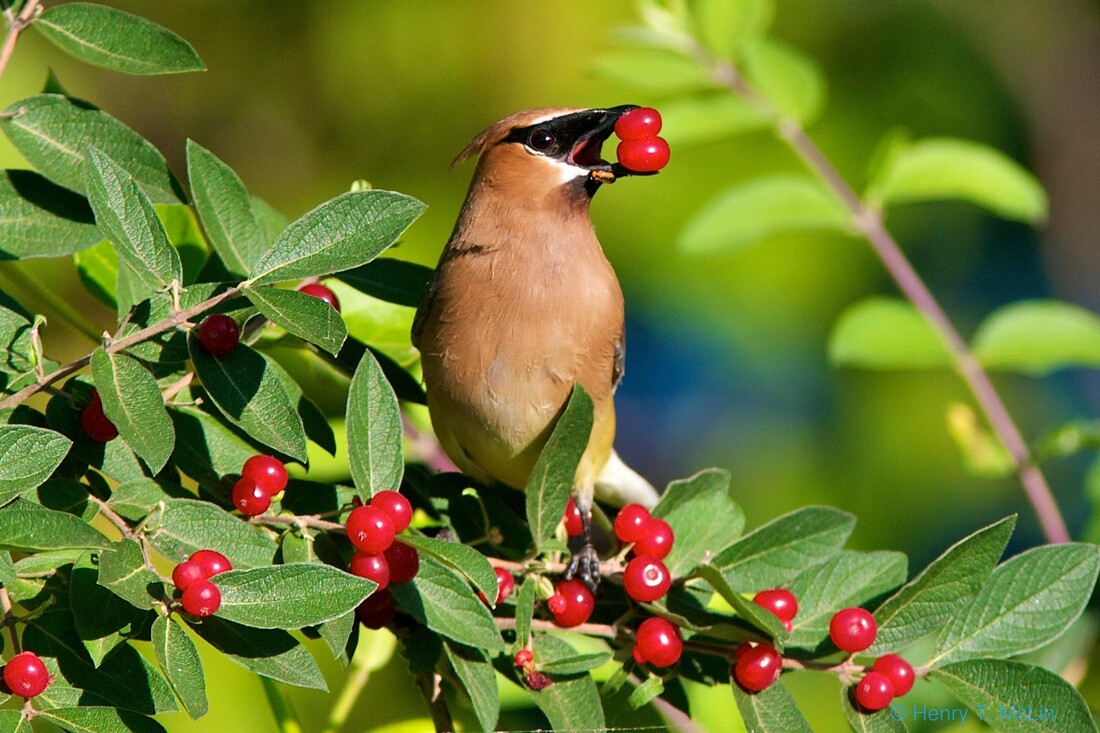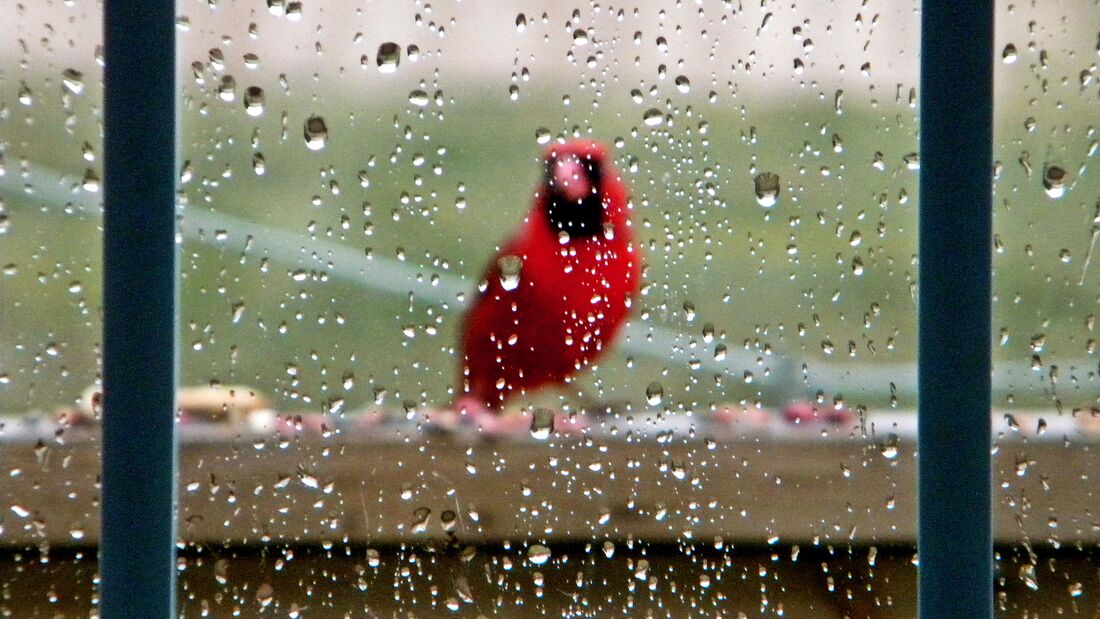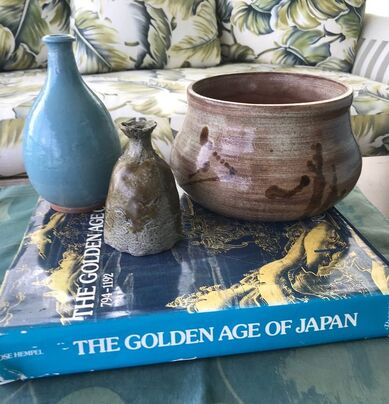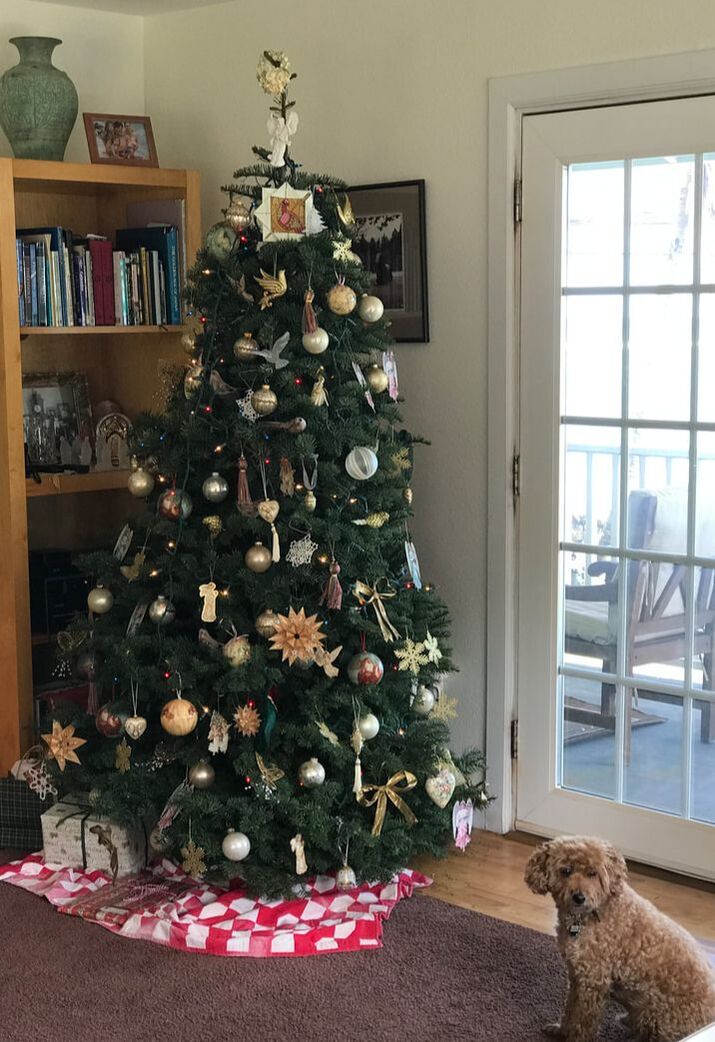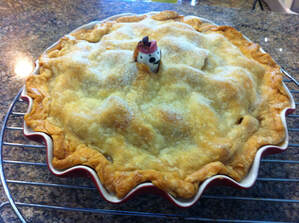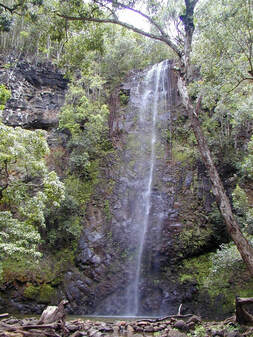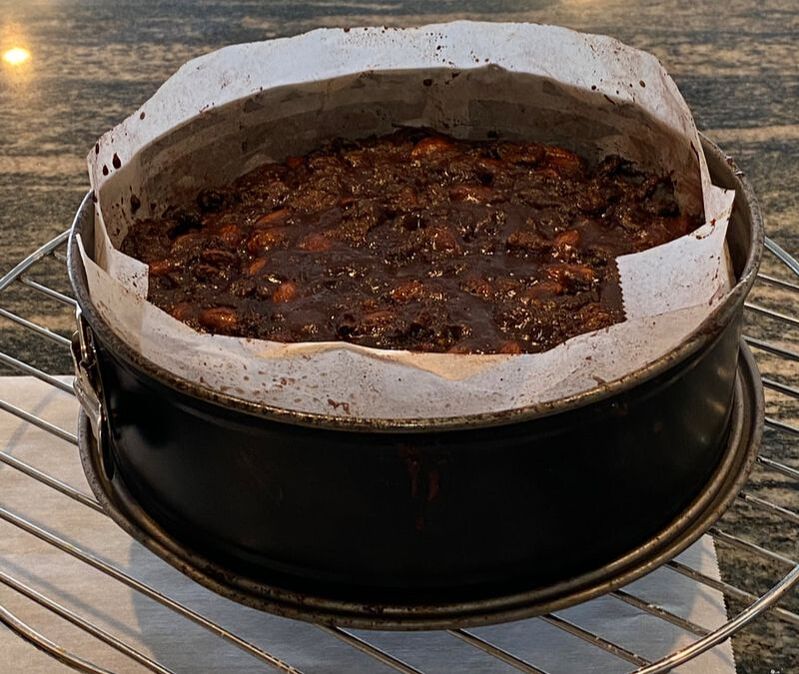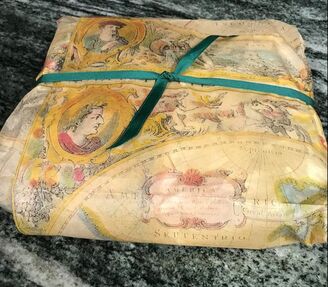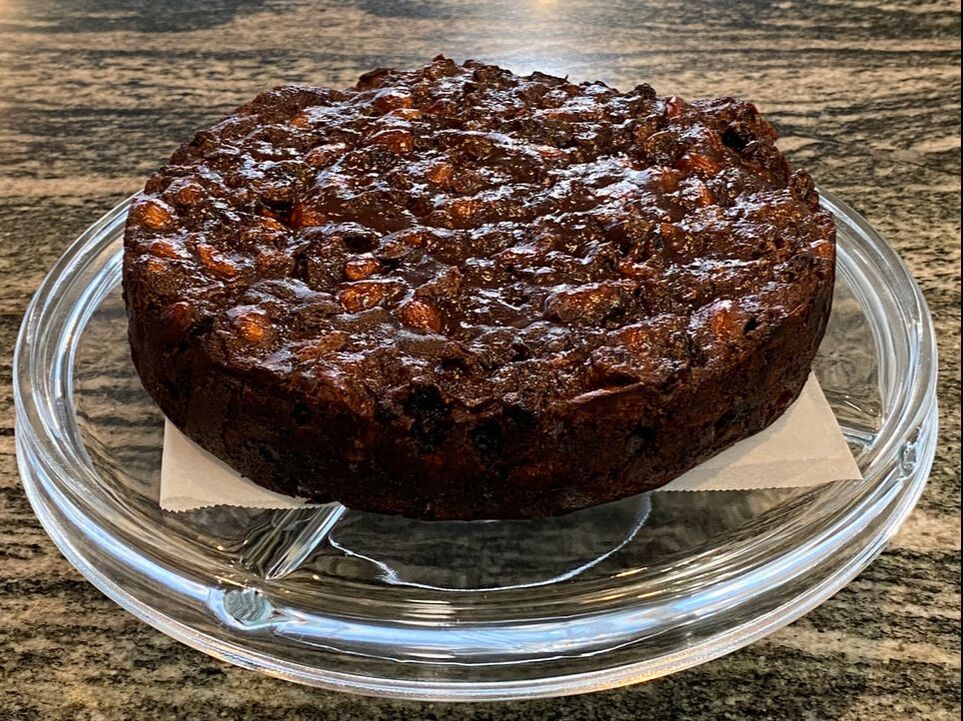|
The Last Leaf
On the sheepdog’s splendid coat, Softer than a winter hare, And marbled like marshmallow and butterscotch, The last leaf from the Japanese maple Rides like a tiny crown, Jeweled, blood-colored, Heralding December’s mysteries Of darkness and light. |
In childhood, it was all the gifts under the tree, wrapped in sparkling paper with glowing bows, that kept me captivated. And the delicious anticipation. I was one of those kids who pinched the packages and shook them to see if they rattled. I didn’t give Santa or my parents a list. I liked surprises. One year, when I was very young, I received a Storybook Doll named Stardust Black, dressed in a black net dress with glitter sparkling all over it. She was perfect, and I loved her for years. I also loved the doll my sister got that year, Senorita Red, wearing a red satin dress and a black lace mantilla. Always generous in sharing, my sister let me play with Senorita Red whenever I wanted to, but I loved Stardust just a little bit more. Somehow my parents knew which doll belonged with which girl.
When I was a teenager, my brother surprised me at Christmas with a gorgeous light aqua angora sweater with clear glass buttons, the most beautiful sweater I had ever seen. I was astounded that my brother, only a year and a half older than I, was capable of such exquisite taste and sensitivity. That same year at Christmas, my boyfriend, now my husband, gave me a gold charm bracelet with dangling coins that I had helped him pick out as a “gift for his sister.” Another delightful surprise, the first gift he ever gave me.
All of us can remember special gifts that we received at Christmas over the years. And we smile with pleasure at the memory of a gift we gave that brought joy to someone. This year, in spite of the terrible virus, Christmas will still be a time of joy and celebration.
Though the coronavirus will not be eradicated this year by Christmas, and we may have to postpone visits, even with our closest family members, we will not forget the warmth that overcomes the cold and the light that enters the darkness on this eternal holy day.
I still treasure a green silk scarf hand dyed by my niece Kathleen when she was at the university studying textiles. I still wear a lovely floral blouse made years ago by my sister-in-law Joyce. Paintings created by my late father, Patrick Murdock, hang on my walls here in Hawaii, and on my coffee-table stand three hand-made ceramic vases, crafted by my brother John, (yes, the one who gave me the lovely angora sweater) my son David when he was in elementary school and my husband’s late cousin and dear friend, Roy Nishi. And on the few chilly days of Oahu’s winter, I wrap myself in the soft rose-colored prayer blanket crocheted for me by my friend, Donna Lenahan.
Fruitcake is not for everyone, and when preparing a hand-made gift, one does have to reflect on the recipient’s taste, preferences and character. As a child, I was mystified by the odd gifts that the Wise Men gave to the Christ Child. I never heard of giving gold to a baby, and I had no idea what frankincense and myrrh even were. I was well into adulthood before I heard and read speculation as to the symbolic portent of these gifts, foreshadowing the spiritual kingship and sacrificial death of Jesus, as myrrh and frankincense are scented oils used to prepare a dead body for burial in ancient Middle Eastern culture. While we may not have the spiritual insight of the Three Magi from the East, our gifts could certainly affirm any special talent or potential we see in our friends. Knowing that I am a tea aficionada, my friend Diane Lau, who likes to sew, gave me a hand-sewn “mug rug” to place near my computer to hold a cup of tea while I write my blogs. My mug rug’s companion is a charming little cloth envelope for holding and transporting tea bags. (For more about Diane, see my September 2020 blog, “A Healing Tea.”)
In planning our Christmas gift projects, we must resist the urge to make a gift that we ourselves would love to receive. While I have a passion for dark chocolate, many people prefer savory and salty snacks. And whereas I love lotions and potions scented with natural herbs and flowers, not every man wants a bottle of rose petal scented bubble bath for Christmas, though some might.
This year, as always, my Christmas gifts will be baked goods, and I hope, as always, that my friends and family members will enjoy them as much as I love making them. My nieces, Shana and Diana have made it clear that they are not interested in any fancy new Christmas cookies. They want Spritz butter wreaths, hand cranked from my old cookie press, and nothing else. (See the December Christmas Tea on this website.) And I have learned through the family grapevine that my nephew Peter really likes Panforte. I love it too, and am happy to share this wonderful, festive cake of ancient origin as my Christmas gift to you. You can read all about it in the Italian Tea in the “World of Tea Parties” section of the Tea Book on this website.
I found this recipe for Panforte in the December 2002 issue of Gourmet magazine and have made it every year since. It contains none of the artificial food colorings, preservatives or extra corn syrup of fruitcake mixes and can almost be viewed as health food. This recipe makes a large, nine-inch single layer round cake that will be stunning on your cake pedestal on Christmas Eve. It is not meant to be served in slices like most cakes. Panforte is so rich and dense that it is eaten in small chunks like fudge. You will have plenty left over for Christmas Day and beyond.
- 4 teaspoons unsweetened Dutch-process cocoa powder, plus more for dusting the pan
- 2/3 cup flour
- 1 teaspoon ground cinnamon
- ½ teaspoon ground ginger
- 1/8 teaspoon ground cloves
- ¼ teaspoon salt
- 2 cups whole toasted almonds
- 1 cup (8 ounces) soft pitted prunes, cut into small pieces
- 1 cup (8 ounces) soft dried figs, preferably Mission, cut into small pieces
- 1 cup (8 ounces) soft dark raisins
- ¾ cup white sugar
- 2/3 cup honey
- Cooking spray for the pan
Makes: about thirty pieces
Preheat oven to 300° F
- Spray a 9-inch springform pan with cooking spray, line the bottom with a round of parchment paper cut to fit, and cut strips of parchment to fit into the sides. Spray the parchment. Using a sieve, dust the bottom and sides of the prepared pan with cocoa powder, knocking out the excess.
- If the almonds are not already toasted, toast them on a foil-lined cookie sheet for about 10 minutes, stirring them occasionally with a wooden spoon to avoid burning. Set the almonds aside to cool. Using a paring knife, cut the figs and prunes into small pieces, making sure to remove any stems. Set aside with the almonds and raisins.
- In a large mixing bowl, sift together the flour, spices, salt and 4 teaspoons of cocoa powder. Stir in the prepared fruits and nuts and mix with a wooden spoon until the fruits are well coated with the flour mixture.
- Bring the sugar and honey to a boil in a 2-quart saucepan, stirring until the sugar is dissolved. Place the candy thermometer in the pan and boil without stirring until the thermometer registers 238-240, about 2 minutes.
- Put on disposable kitchen gloves and immediately pour the honey over the fruit mixture in the bowl. The mixture will be very thick and sticky. Stir to combine all the ingredients. Using the wooden spoon, quickly transfer the mixture into the prepared pan, spreading it evenly with the back of the spoon. Moisten your fingers and press the mixture firmly and evenly into the pan to compact it.
- Bake the Panforte in the middle of the pre-heated oven until the edges start to rise slightly and take on a matte appearance, 50-55 minutes. Cool completely on a wire rack. Then remove the sides of the springform pan and the parchment. To serve, place the Panforte on a decorative platter or cake pedestal and cut into small pieces with a serrated knife.
- Panforte can be aged well in advance of serving. Wrap in parchment, then foil and store in a 1-gallon plastic zip-lock bag. Refrigerate until ready to serve.
